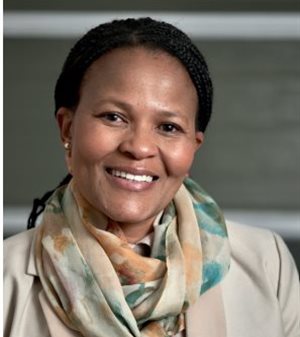Smart cities promise to transform urban life with innovative technology and data-driven solutions. The global market for smart cities is expected to reach $89.49 billion by 2023, growing at an annual rate of 13.13%.

Source: Pixabay/Pexels
Governments around the world are investing in smart city initiatives, and various rankings measure their performance and innovation. One such ranking is the IMD Smart City Index, which ranked Cairo, Algiers and Cape Town as the top three smart cities in Africa in 2023.
But to realise their full potential, these urban hubs need to ensure they have the right security and connectivity infrastructure in place.
Smart cities are characterised by their ability to improve the quality of life for their citizens with interconnected systems and technologies.
Each city has its own vision of what being "smart" means. It could be enhancing safety, sustainability and environmental protection, or simplifying access to services that were previously cumbersome and inefficient. To achieve these goals, smart cities need the right tools.
Security and connectivity
Security and connectivity are the key enablers of smart city development. Connectivity is the backbone of the smart home, smart community, smart building, and smart industry.
It allows for seamless communication among devices, systems, and platforms - think of the Internet of Things (IoT), the network of devices and sensors that collect and exchange data, without a reliable connection.
This means that any smart city must start by building a smart foundation on a network that can handle the demands of IT.
Smart, in the context of the city, is a fully connected, fully integrated and sustainable intelligent space capable of processing data from people, devices and systems with ease.
Operationally, this relies on network connectivity to pull together the threads across buildings, assets, services, and individuals. It is also the key to embedding security throughout any smart environment or city.
The network is the nervous system of the smart city, giving it the ability to connect across multiple touchpoints and reimagine citizen safety and wellbeing.
How? The answer lies in the data created by the smart solutions and collated by the network.
The important information, trends such as personnel, vehicles, facilities, alert incidents, and task processing are all critical to ensuring that the government has the information it needs to enhance decision-making and manage resources.
In addition, connectivity links systems to provide comprehensive security through video surveillance and rich visibility.
Here, the smart city can transform citizen safety by implementing cameras throughout the city for surveillance and monitoring purposes so there are no security blind spots and decision-makers have access to real-time information that can protect and save lives.
End-to-end solutions
Consider how this comprehensive security can translate into the real world. A fire breaks out in a building. The automatic fire alert system uses the data from the smoke and temperature sensors to trigger alarms and send alerts and nearby cameras are instantly linked to push out real-time images automatically to the nearest control centre.
Security personnel can confirm the fire alerts and rapidly initiate the emergency response procedure. The integrated security management system then links access controls in all entrances and exits to automatically open to the fire-free zones surrounding the building while all access points are opened to facilitate the safe evacuation of personnel.
People affected by the fire are notified by SMS and guided to the closest escape and the relevant emergency services are dispatched to put out the fire.
Intrusion detection can be managed the same way – an interconnected web of devices provides security personnel with visibility into the threat and gives them the ability to orchestrate the right level of security response.
Smart ecosystem
Smart city visibility translates across vehicle retrieval, traffic management, emergency response, energy, and environment management and, of course, cybersecurity.
Creating a smart ecosystem, one must leverage next-generation technology that embeds connectivity, next-generation devices, intelligent platforms, and third-party expertise.
Smart city developers must consult with an extensive range of experts and find suppliers with the correct technologies, plus a robust backbone of resilient connectivity who have the tools to ensure that smart cities and smart environments are built to the highest standards.
These suppliers must also understand the critical priorities of physical and digital security and how to deploy it alongside the necessities of connectivity and technology ingenuity.

































